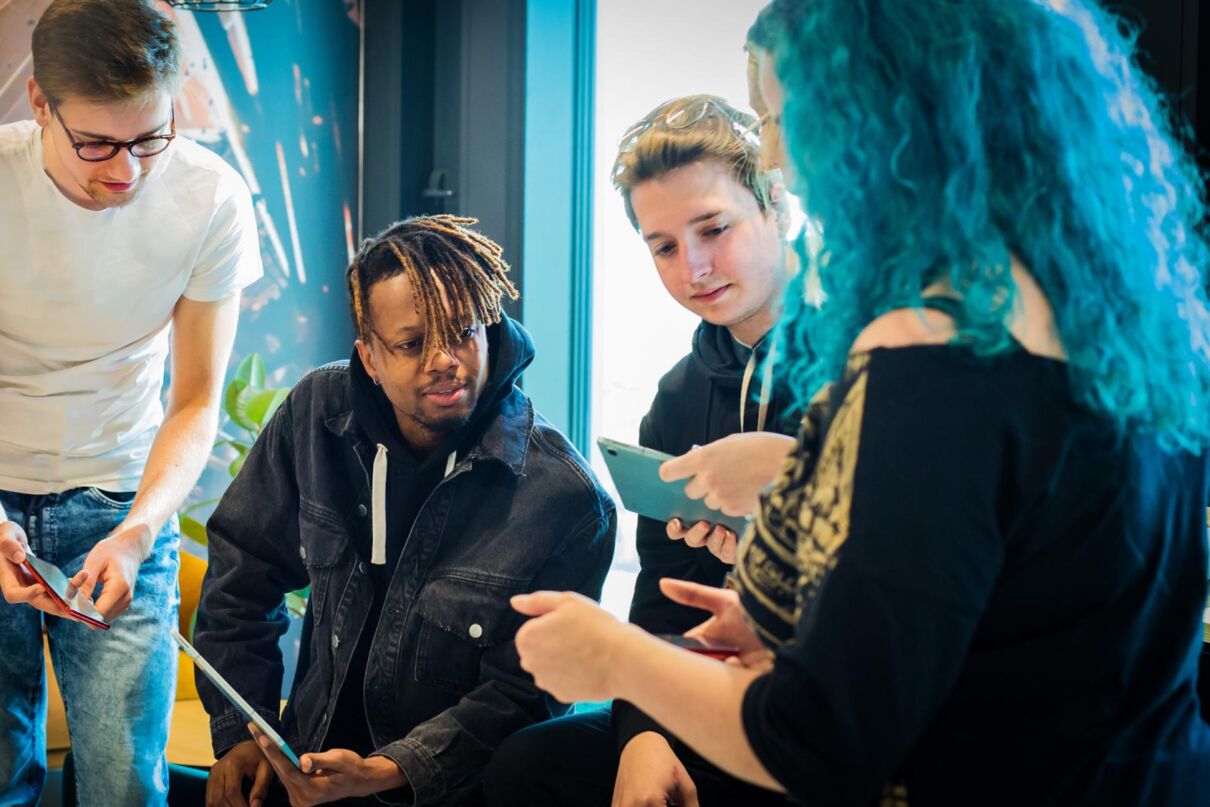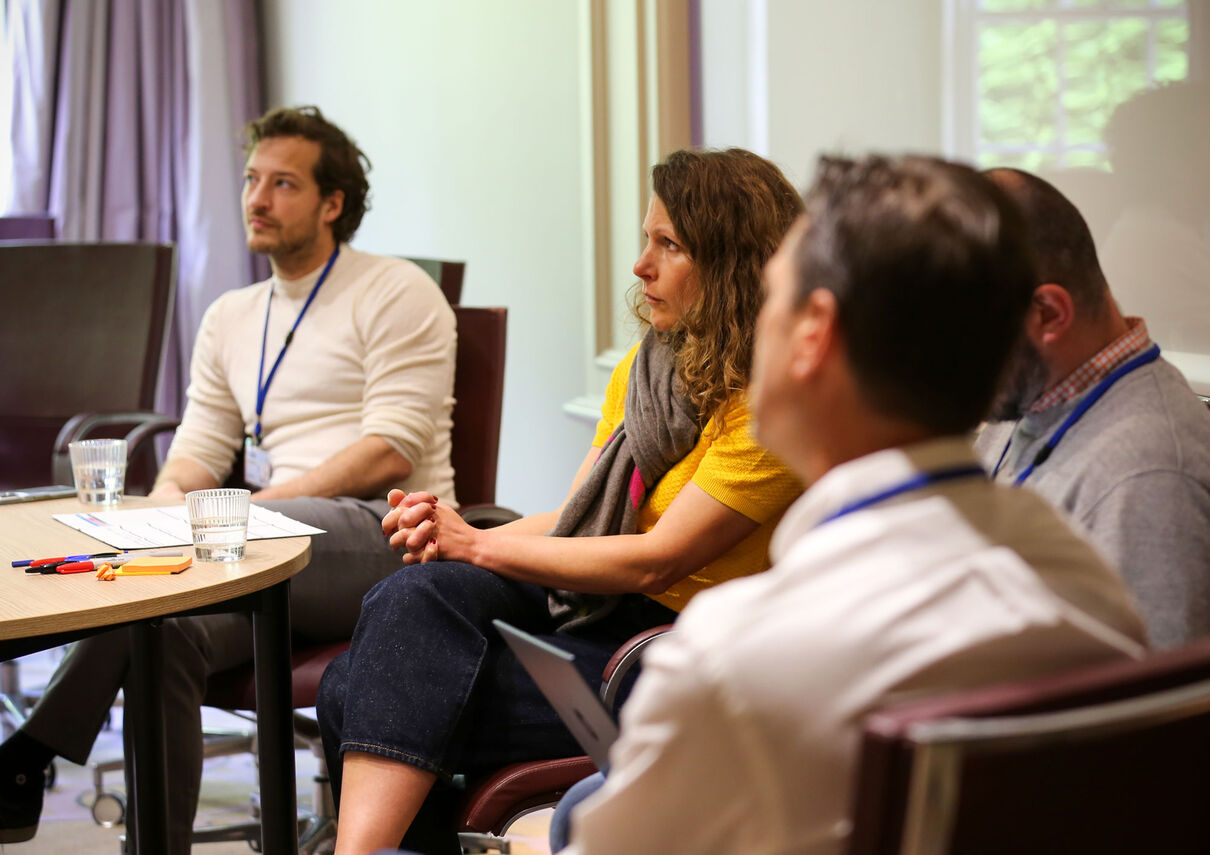Inclusive Communication in the Workplace: Key Takeaways and Practical Examples
At Keywords Studios, we’re committed to creating workplaces where people feel heard and valued. Inclusive communication and the conscious use of respectful, bias-free language; is essential to building that culture.

Recently, Keywords Studios hosted an internal webinar dedicated to "Understanding Inclusive Language and Pronouns."
Led by Athena-Maria Enderstein, Group Head of Diversity, Equity, Inclusion, and Belonging and Andrea Matute, Learning and Development Specialist, the session explored how the words we choose and how we communicate can either build inclusion or unintentionally exclude others.
Here’s what we learned and how you can apply it in your own workplace.
Why Inclusive Communication Matters in the Workplace
Inclusive communication is about ensuring people are treated equally and respectfully. It’s part of building a more equitable society and involves being mindful of the words we use and how they might impact different individuals. One of the key messages of the webinar was that inclusive communication is not just about avoiding offense; it's about actively creating belonging.
Inclusive language is an essential component of inclusive communication. As Andrea said, inclusive language is about “choosing words that create a space for everybody, not just the majority, helping people feel acknowledged for who they are.”
Inclusive Language in Practice: Everyday Examples
Key takeaways regarding inclusive language included:
- Awareness of bias: Recognizing that our language can sometimes reflect biases, which then replicate inequalities. Think of expressions like “manpower,” “normal people,” or “you guys.” By actively choosing neutral terminology we are more inclusive.
- Example: Instead of “We need more manpower on this,” try “We need more support” or “We need more people on this.”
- Avoiding assumptions: Refraining from making assumptions about a person's background, abilities, or identity based on their appearance, name, accent or any other characteristic. Assumptions are easily misleading, and may be irrelevant to the topic. Rather than guessing someone’s background or role, ask or keep descriptions neutral.
- Example: Say “the Production Manager on Project A” rather than “the Muslim Production Manager”.
- Gender-neutral language: When gender isn’t relevant, keep language open.
- Example: use "they" instead of "he/she" and "chairperson" instead of "chairman." Replace “maternity leave” with “parental leave” when speaking generally.
- Considering cultural nuances: Idioms and humour don’t always travel well.
- Example: A phrase like “hit it out of the park” might make sense to a North American team but confuse others. Use plain language, especially in global communications.
- Respectful, accurate, and relevant: Inclusive language is respectful, accurate in its meaning across contexts, and relevant to the topic under discussion. It replaces outdated or offensive expressions with neutral and accessible language.
- Example: In Canada refer to “First Nations people” and preferably the specific community, don’t use derogatory terms like “natives”.
Respecting Pronouns and Identity in the Workplace
Understanding and respecting personal pronouns is part of inclusive communication. Whether familiar to you or not, multiple genders are part of human diversity. As Andrea explained, “pronouns are an important part of everyone's identity”. The webinar highlighted that misgendering someone, even unintentionally, can be hurtful, using someone’s correct pronouns keeps a safe and inclusive team environment.
How to Use and Discuss Pronouns Respectfully
Here are some key learnings regarding pronouns:
- Ask, don’t assume: The most respectful approach is always to ask someone their pronouns if you are unsure. A simple "What pronouns do you use?" or "How would you like me to refer to you?" goes a long way.
- Normalise sharing: Encouraging the sharing of pronouns in introductions, email signatures, and virtual meeting platforms helps to normalize the practice and creates a more inclusive space for everyone.
- Common pronoun sets: Familiarising oneself with common pronoun sets in your language, such as "she/her," "he/him," and "they/them," in English. Andrea explained that "neopronouns" like "ze/zir/zirs" and "em/eir/eirs," emerged to provide gender neutral options in English where these don’t exist.
- Example: “Ze finished the report early, and I thanked zir for the quick turnaround.”
- Correct mistakes gracefully: If you accidentally misgender someone, acknowledge your mistake, apologize briefly, correct yourself, and move on. Dwelling on the error can make the other person feel uncomfortable.
- Example: “She—sorry, they—sent the latest build yesterday.”
Overall, the message is to keep practicing. Like learning any new skill, communicating inclusively takes practice. The more you consciously apply these principles, the more natural it becomes.
Everyday Habits for Inclusive Communication
Athena and Andrea closed the session with simple, actionable habits—small shifts that add up to cultural change.
- Listen actively: Pay attention to how people refer to themselves and others. Mirror their language when it feels appropriate.
- Educate yourself: If a new term arises—like Latinx or neurodivergent—look it up. Curiosity is respect in action.
- Be an ally: If someone is misgendered or excluded by language, you can step in gently: “Just a reminder—Kai uses they/them pronouns.” Correct privately if needed; support publicly when appropriate.
- Review your communications: Before sending an email or publishing a post, read it once more through an inclusive lens. Ask: Would this make sense and feel respectful to everyone reading it?
- Create a welcoming environment: Encourage open dialogue. Inclusion thrives where people feel safe to speak up and share when something doesn’t sit right.
- Avoid generalizations and stereotypes: Skip clichés like “women are better multitaskers” or “gamers are all young men.” These limit people rather than describing them.
- Be mindful of mental health phrases: Avoid using mental health terms inappropriately for everyday behaviors. Phrases such as “I’m so OCD about this layout” trivialise real conditions. Choose neutral alternatives like “I’m particular about details”.
- Limit jargon and idioms: Be aware that business jargon, acronyms, idioms, and figures of speech may not translate across cultures or to those for whom English is not their first language.
Building a Culture of Belonging, one word at a time
Inclusive language isn’t about policing speech—it’s about connection. Every mindful word makes our workplaces safer, our collaboration smoother, and our creativity stronger.
Language evolves, and so can we.
At Keywords Studios our next topic in this theme is developing intercultural competence. We’ll continue practicing, learning, and listening because inclusion isn’t a single destination; it’s a daily habit that helps all of us Imagine More.












